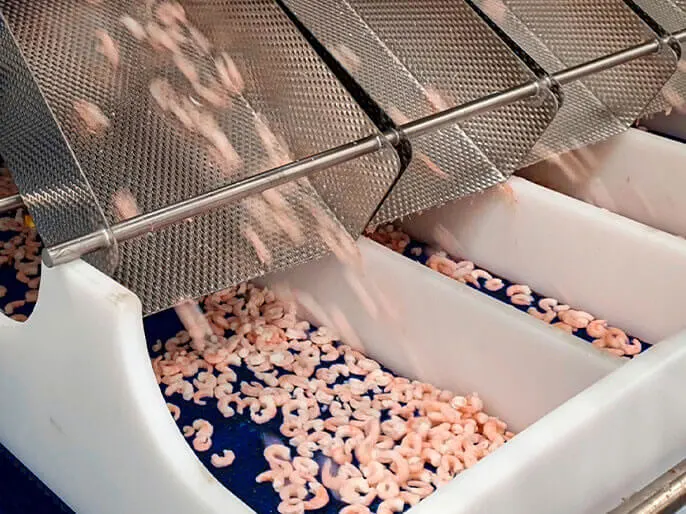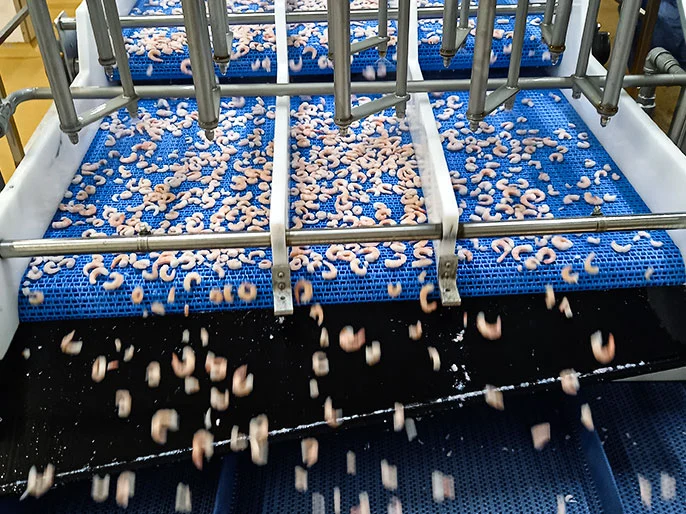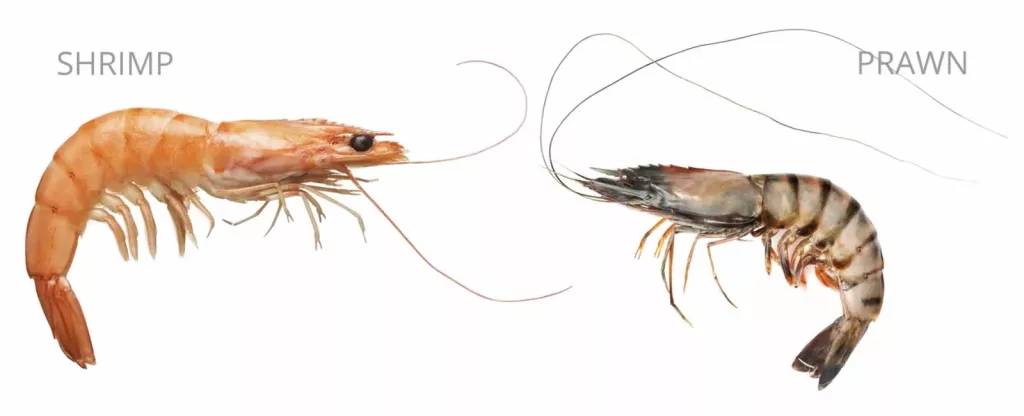
What is IQF Technology?
30 July 2021
Shrimp processing Equipment for Modern Enterprises
18 November 2021
What is IQF Technology?
30 July 2021
Shrimp processing Equipment for Modern Enterprises
18 November 2021DIFFERENCES BETWEEN
SHRIMPS AND PRAWNS
People often get confused about the differences between shrimps and prawns, and you may have heard that they are the same. Yet though prawns and shrimps are closely related, they can be distinguished in several ways. Our company has been in the shrimp processing equipment business for over 35 years, supplying and building machinery for the seafood industry, and guess what? We know for sure the differences between a prawn and a shrimp.
We often hear people using prawns and shrimps interchangeably, even within the farming, fishing, and culinary realms. There are even misconceptions out there that prawns are merely gigantic shrimps. In this article, we will show you some notable differences between them.

Anatomy of shrimps and prawns
Looking closely at the two of them, you will see how distinctly different they are. Both prawns and shrimps have a thin exoskeleton, and their bodies have three parts: the head, thorax, and abdomen. While both are decapod crustaceans, meaning both have ten legs and external skeletons, their classification similarities end there. The main difference in anatomy between prawns and shrimps is their body form.
Shrimps belong to the sub-order Pleocyemata, which also includes crayfish, lobsters, and crabs. Their thorax overlaps their head and abdomen in shrimps, allowing them to bend their bodies more so than prawns. Shrimp have two pairs of claw-like legs, unlike prawn, and plate-like gills.
Prawns belong to the sub-order Dendrobranchiata. Each segment of a prawn overlaps the one below. For example, the head overlaps the thorax, and the thorax overlaps the abdomen. That is why prawns are unable to bend their bodies in the way shrimps do. Prawns also have three pairs of claw-like legs (longer than shrimps), second pincers larger than the front, and branching gills.
Another difference between prawns and shrimps worth mentioning is how they reproduce. Prawns release their eggs into the water then leave them to grow on their own. Shrimps will carry their fertilized eggs on the undersides of their bodies.
Habitat differences
of shrimp and prawns
While both live in waters worldwide, there are some notable differences in where they can live. Depending on the shrimp species, you may find them in saltwater, both warm and cold areas, and even some in freshwater areas. Most prawns live in freshwater, although you will sometimes find some species in slightly salty water. While they prefer warm water, some live in cold water in the Northern Hemisphere.
Need help?
If you own or manage a seafood processing plant and you need to expand your production line, feel free to contact us and we will be glad to help. We provide our clients with turnkey solutions. We build, sell and install machinery for the seafood industry.
Size differences
Keep in mind that size is not always an accurate indicator of a shrimp or prawn. Both may vary in size depending on the species. There is no standard size that makes a difference, but we could typically classify crustaceans by count per pound instead. A good rule of thumb to differentiate between the two is size, as prawns are typically larger than shrimp. If you want to know what crustacean you purchased without making a trek out on a shrimp boat, then check the shell.
Taste and texture differences
There is no real distinguishable difference in the texture or taste between shrimp and prawns. While some people may argue that there are differences in taste between saltwater and freshwater crustaceans, others may say one species is sweeter than another. The truth is, they are very similar in both taste and texture. Instead, it is much more likely that a shrimp or prawn diet and habitat influence its taste and texture. It boils down to how this allows them both to be used interchangeably in a wide variety of incredible dishes.
To add to the confusion
Although it is clear these two crustaceans are very different from each other, the terms “Shrimp / Prawn” seem to be used interchangeably. The words are from England, and it tends that UK people use “Prawn” to refer to these two crustaceans.
